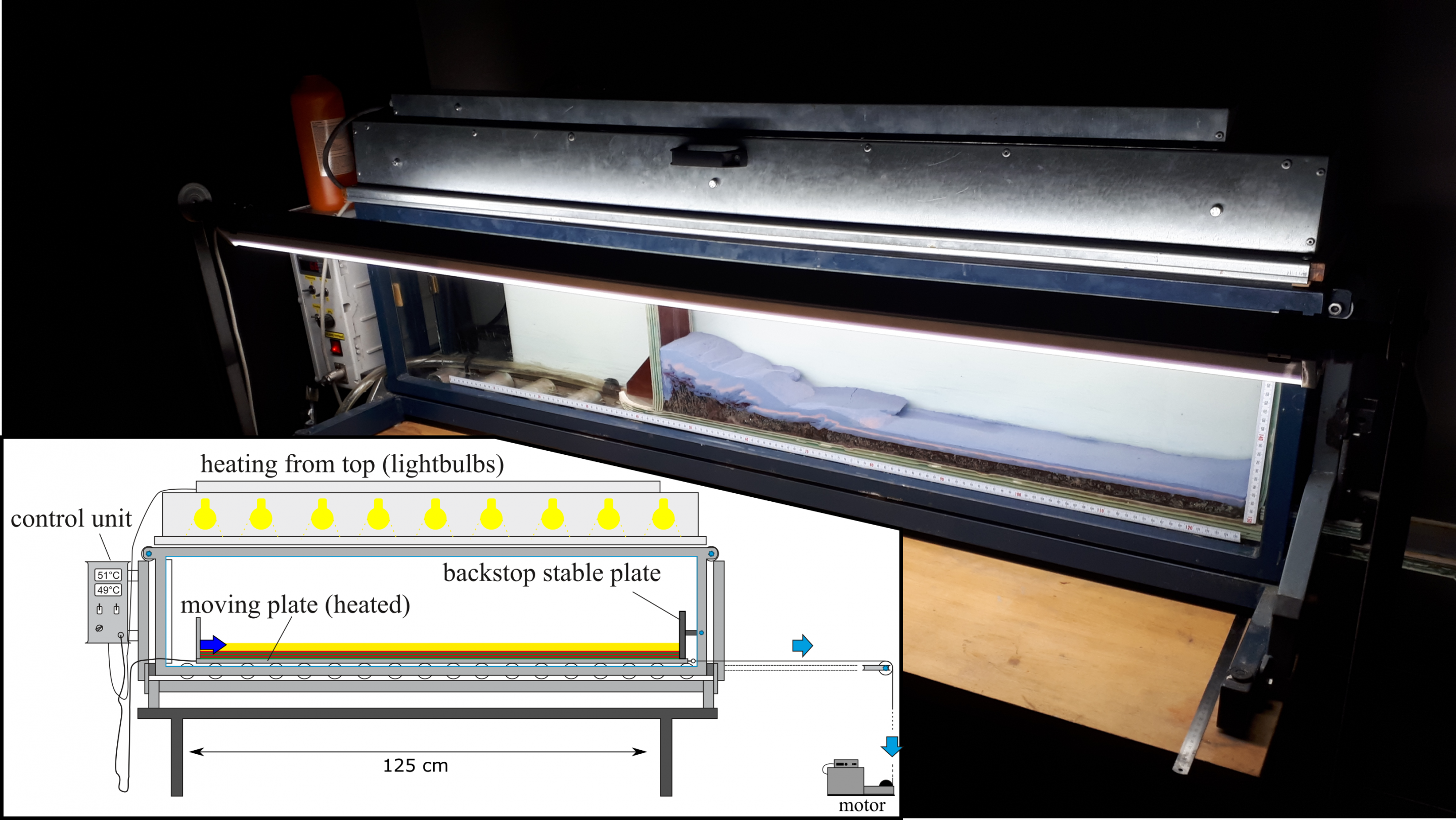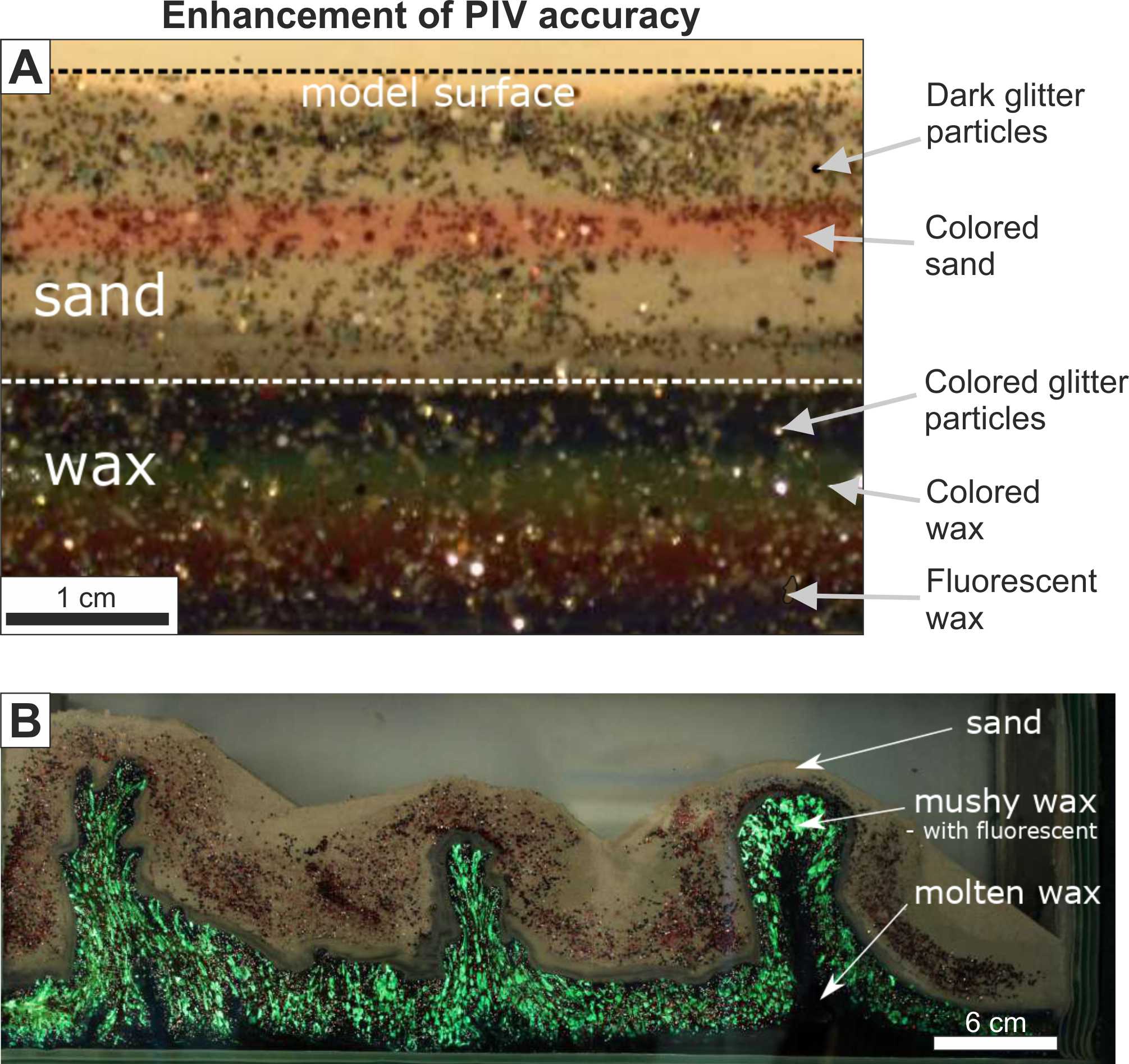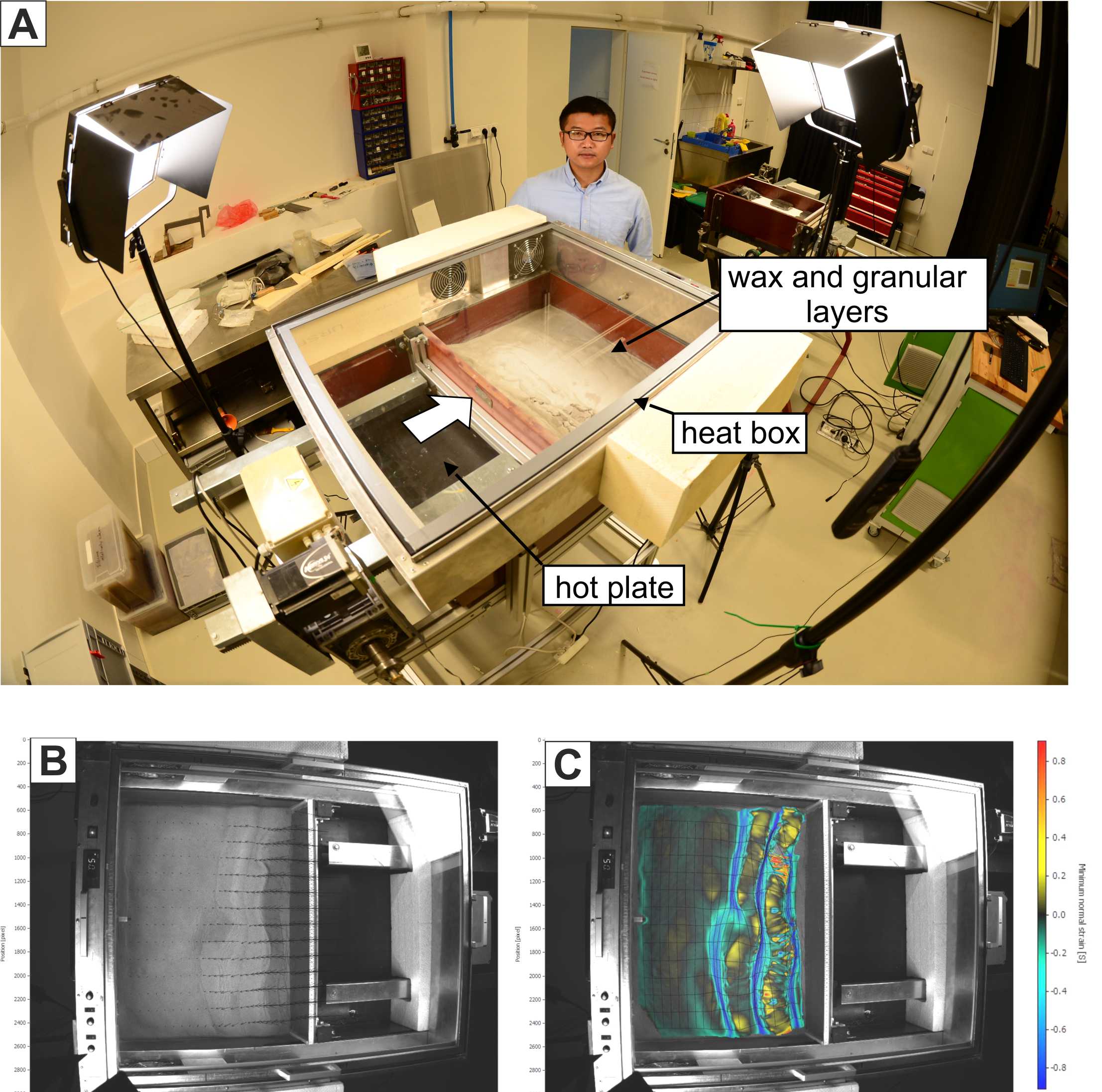PROJECT DESCRIPTION
The Paleozoic Variscan orogen in Europe or the Mongol-Hingan orocline in the Central Asia are partly built-up of dome-like structures comprising migmatites and granulites and are surrounded by sedimentary units affected by Barrovian metamorphism. The arrays of such domes form by crustal-scale buckling, whereas the crust was heated during a precursory phase of extension or by emplacement of a hot relaminant below the lower crust (e.g. Lehmann et al., 2017; Krýza et al., 2021). The development of these domes is associated with rapid ascent and cooling of their anatectic cores. Using the analog modeling, we aim to understand the dynamics of buckling of the crust containing an anatectic lower crust and role of melt in this process (Lehmann et al., 2017; Krýza et al., 2019; 2021). We use paraffin wax superposed by sand to simulate the lower and upper crust, respectively. A thermal gradient is created by heating of the models from the bottom by a heating plate. A computer controlled step-motor is used to move the base plate against a backstop.
This study is conducted in cooperation with the Center of Lithospheric Research – Czech Geological Survey.

Geodynamic model of the Permian collision of the Junggar arc with the Altai accretionary wedge explaining the structural evolution of three equally spaced zones in the southern Chinese Altai as a function of distance from the collisional zone in the south (modified from Jiang et al., 2019).

Apparatus for a thin sheet contraction modelling and example of a progressing model of detachment folding (Krýza et al., 2019). The device is capable of heating the model from top and bottom to create a stable thermal gradient in the vertical profile. The basal plate is pulled to the right by a computer controlled step-motor. This allows a deformation of the model multilayer by pushing against the back-stop wall on the right. Paraffin wax and granular materials (sand and cenosphere mixtures) are used to simulate the ductile anatectic lower crust and brittle upper crust, respectively.

Detail of the crustal-scale detachment folding model (Krýza et al., 2019). (A) shows the composition of the wax-sand model domain, which contains small, mechanically inert particles improving the accuracy of the digital image correlation. (B) displays the finite shape of the model after 55% shortening – a series of detachment folds. Incorporated fluorescent wax particles reflect the strain pattern in the plastic part of the model while dark areas correspond to zones of melt accumulation.

(A) Contour diagrams of the velocity and deformation field plotted for 30 % shortening. Original displacement field was calculated by 2D PIV (PIVlab toolbox for Matlab software). (B) Models of detachment folding (for details see Krýza et al., 2019).

(A) Experimental setup for simulating crustal-scale detachment folding with an anatectic lower crust, where we focus on the deformation in the plan view. The temperature of the bottom hot plate and the ‘heat box’ is set close to the melting point of the wax inside the model. The model is preheated for 24 hours to attain an equilibrated thermal gradient and then horizontally shortened. (B) Displacement vector field. (C) Normal strain patterns.
Publications
- Jiang, Y. D., Schulmann, K., Sun, M., Weinberg, R. F., Štípská, P., Li, P. F., Zhang, J., Chopin, F., Wang, S., Xia, X.P., & Xiao, W. J. (2019). Structural and geochronological constraints on Devonian suprasubduction tectonic switching and Permian collisional dynamics in the Chinese Altai, Central Asia. Tectonics, 38(1), 253-280, doi: 10.1029/2018TC005231
- Krýza, O., Lexa, O., Schulmann, K., Guy, A., Gapais, D., Cosgrove, J., & Xiao, W. (2021). Oroclinal buckling and associated lithospheric-scale material flow–insights from physical modelling: Implication for the Mongol-Hingan orocline. Tectonophysics, 800, 228712, doi: 10.1016/j.tecto.2020.228712
- Krýza, O., Závada, P., & Lexa, O. (2019). Advanced strain and mass transfer analysis in crustal-scale oroclinal buckling and detachment folding analogue models. Tectonophysics, 764, 88-109. doi: 10.1016/j.tecto.2019.05.001
- Lehmann, J., Schulmann, K., Lexa, O., Závada, P., Štípská, P., Hasalová, P., Belyanin, G., & Corsini, M. (2017). Detachment folding of partially molten crust in accretionary orogens: A new magma-enhanced vertical mass and heat transfer mechanism: Lithosphere, v. 9, no. 6, p. 889–909, doi: 10.1130/L670.1
Period
2019-2023
Researcher
Collaborators & Visitors
- Karel Schumann (Czech Geological Survey)
- Tan Shu (University of the Chinese Academy of Sciences (UCAS)
Funding
- GAČR No. GX19-27682X: ‘Principal mechanisms of peripheral continental growth during supercontinent cycle’
- GAČR No. 19-25035S: ‘Granulite-migmatite domes – insight into the Devonian and Carboniferous development of the Variscan belt’


